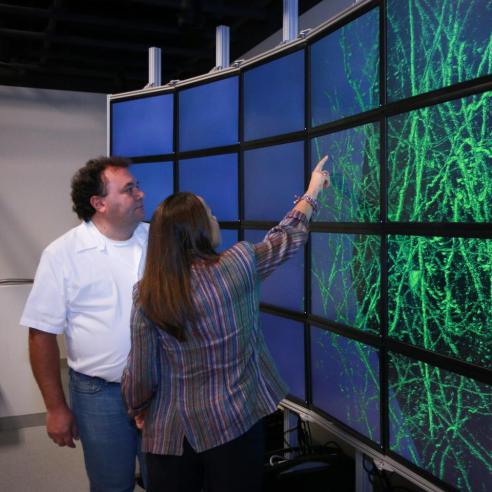Revolutionary Scanner Detects "Lazy Eye" in Children With High Degree of Accuracy
RPB researchers have developed and tested a simple, seconds-long screening exam with a handheld scanning device to enable pediatricians to identify amblyopia, the leading cause of vision loss in childhood, in children as young as two.
The Pediatric Vision Scanner is the product of a collaboration between researchers - both supported by RPB - that began 20 years ago.
Study Confirms That "Lazy Eye" Treatments Are More Effective in Younger Children
By comparing studies of children treated for amblyopia, an RPB researcher determined that the condition is more responsive to treatment among children younger than 7 years of age.
July 20, 2011
Related News: Amblyopia

3-D Map of the Brain Will Help Eye Researchers
View can help researchers understand how the brain’s connectivity is disrupted in mental and neurological conditions such as schizophrenia, depression, anxiety, autism and in vision-related conditions.

Amblyopia Research Gets a Boost: RPB Matches a Special Donor’s Targeted Support
RPB is doubling its annual support of amblyopia research and honoring an esteemed donor, the late Diane Disney Miller. Amblyopia, commonly referred to as "lazy eye," is the major cause of monocular...
Subscribe
Get our email updates filled with the latest news from our researchers about preventing vision loss, treating eye disease and even restoring sight. Unsubscribe at any time. Under our privacy policy, we'll never share your contact information with a third party.
| General Info | Grants | News & Resources |



